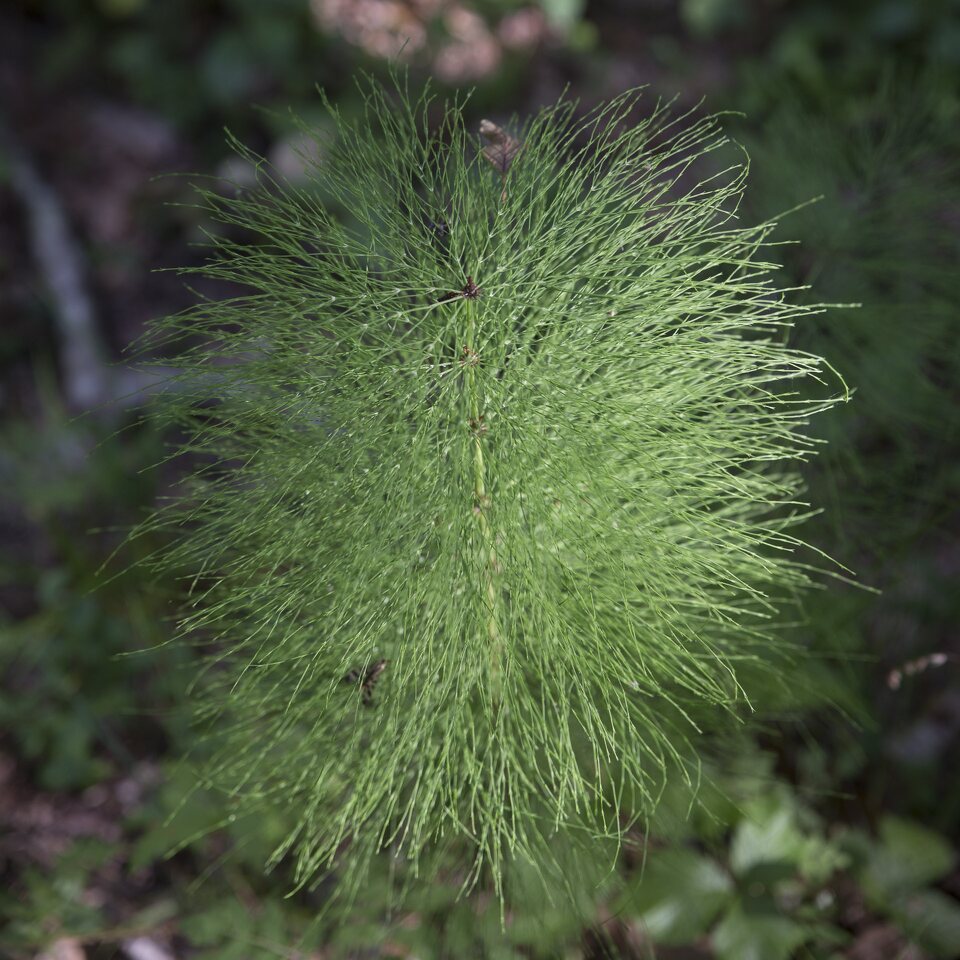
Equisetum telmateia · didysis asiūklis
- great horsetail, northern giant horsetail
- Riesen-Schachtelhalm
- didysis asiūklis
- lielā kosa
- skrzyp olbrzymi
https://en.wikipedia.org/wiki/Equisetum_telmateia Equisetum telmateia subsp. telmateia is native to Europe, western Asia and northwest Africa, and a E. telmateia subsp. braunii native to western North America.
It is an herbaceous perennial plant, with separate green photosynthetic sterile stems, and pale yellowish non-photosynthetic spore-bearing fertile stems. The sterile stems, produced in late spring and dying down in late autumn, are 30–150 cm and 1 cm diameter, heavily branched, with whorls of 14–40 branches, these up to 20 cm long, 1–2 mm diameter and unbranched, emerging from the axils of a ring of bracts. The fertile stems are produced in early spring before the sterile shoots, growing to 15–45 cm tall with an apical spore-bearing strobilus 4–10 cm long and 1–2 cm broad, and no side branches. The spores disperse in mid spring, with the fertile stems dying immediately after spore release. It also spreads by means of rhizomes that have been observed to penetrate 4 m into wet clay soil, spreading laterally in multiple layers. Occasionally plants produce stems that are both fertile and photosynthetic.
Didysis asiūklis randamas pietų Europoje, Šiaurės Amerikos vakarų pakrantėje, bei Jungtinės Karalystės pietuose. Tai labai reta rūšis Lietuvoje, šiuo metu aptinkama tik šalies pietuose ir pietryčiuose, įrašytas į Lietuvos raudonąją knygą. Auga šlapiose, ypač šaltiniuotose vietose, miškų pelkėse. Sporifikuoja balandžio – gegužės mėnesiais.
Didžiojo asiūklio, kaip kitų rūšių asiūklių, stiebas nariuotas, išilgai vagotas, suskirstytas į bamblius ir tarpubamblius. Sporifikuojantys stiebai iki 100–120 cm aukščio ir 10-15 mm storio, makštys su 20-40 dantelių. Varpa 4-6 cm ilgio, tuščiavidurė. Vegetatyvinis stiebas baltas arba gelsvai baltas, 100–150 cm aukščio, storas, apie 10 mm skersmens, viršutinė jų dalis šakota. Šakos žalios, briaunotos.
‥
0 comments
Add a comment